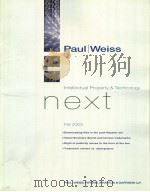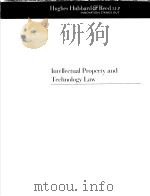《INTELLECTUAL PROPERTY POLICY FOR NON-INDUSTRIAL COUNTRIES》
| 作者 | 编者 |
|---|---|
| 出版 | DARTMOUTH |
| 参考页数 | 388 |
| 出版时间 | 1996(求助前请核对) 目录预览 |
| ISBN号 | 1855217546 — 求助条款 |
| PDF编号 | 812920858(仅供预览,未存储实际文件) |
| 求助格式 | 扫描PDF(若分多册发行,每次仅能受理1册) |
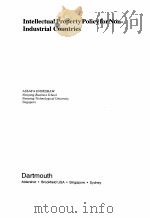
Chapter One - Overview1
1.1 Introduction1
1.2 The Framework of Analysis1
1.3 Organization and Scope9
Chapter Two - The Framework of Inquiry12
2.1 Introduction12
2.2 General Theories of Development of Non-ICs13
2.3 Policy for Economic Development of Non-ICs19
2.3.1 The Nature of Underdevelopment19
2.3.2 Economic Strategy26
2.4 Technological Development in Non-ICs31
2.4.1 Concepts and Definitions31
2.4.2 The International Technology Context35
2.4.3 Role of Technology in Non-ICs38
2.4.4 Strategy for Technological Development42
2.5 Law and Development44
2.6 Conclusion47
Chapter Three - The Course of Intellectual Propety Development in the Major Industrialized Countries53
3.1 Introduction53
3.2 Evolutionary Landmarks in IP53
3.2.1 Earliest Phase54
3.2.2 The Foundations of IP55
3.2.3 Emergence of National IP Systems57
3.2.4 Transborder IP Protection68
3.2.5 Soviet IP and its Demise75
3.2.6 Towards Universal IP Laws?79
3.3 The Rationale of Intellectual Property87
3.4 Conclusion 93Chapter Four - A Proposal for an Intellectual Property System in Non-Industrial Countries98
4.1 Introduction98
4.2 The State of IP in Non-ICs99
4.2.1 Disenchantment with Existing Forms of IP101
4.2.2 Attempts to Revise the Conventions105
4.2.3 Reforming Domestic IP Laws113
4.3 An Alternative System of IP for Non-ICs116
4.4 Conclusion 141Chapter Five - The Intellectual Property Regime in Africa146
5.1 Introduction146
5.2 Evolution of Law in Africa150
5.3 Overview of Intellectual Property Law in Africa160
5.3.1 The African Regional Industrial Property Organization (ARIPO)162
5.3.2 The African Intellectual Property Organization (OAPI)163
5.3.3 Intellectual Property Law of a State Outside the IP Blocks: Zaire166
5.4 The Growing Importance of IP in African Trade172
5.5 Conclusion 175Chapter Six - Features of Ethiopian Economic and Technological Underdevelopment179
6.1 Introduction179
6.2 A Brief Sketch of the State of the Economy180
6.2.1 The First Period (1896-1941)181
6.2.2 The Second Period (1941-1974)183
6.3.3 The Third Period (1975-)189
6.3 The Evolution and Problems of Technology200
6.4 Conclusion 211Chapter Seven - The Evolution and Current Status of Intellectual Property Laws in Ethiopia216
7.1 Introduction216
7.2 Evolution of Pre-code Laws Relating to IP219
7.3 Current IP Laws and Practices226
7.3.1 Literary and Artistic Property226
7.3.2 Trademarks and Unfair Competition240
7.3.3 Confidential Information258
7.3.4 Patents260
7.4 Conclusion269
Chapter Eight - The State of Innovative Activity in Ethiopia and the Case for Introducing Legislation275
8.1 Introduction275
8.2 Industrial Innovations and Legal Problems277
8.3 The State of Innovation in Agriculture286
8.4 A Case Study of Innovation in Stove Technology292
8.5 Conclusion301
Chapter Nine - Laws and Practices in the Acquisition of Foreign Technology in Ethiopia305
9.1 Introduction305
9.2 Legal Regulation of Import of Technology306
9.2.1 The Period to 1974306
9.2.2 The Dergue Period311
9.3 Analysis of Contracts for Acquisition of Technology323
9.3.1 General Government Procurement323
9.3.2 Contracts for Agricultural Machinery323
9.3.3 Contracts Relating to Maintenance and Support Services325
9.3.4 Purchase, Erection and Operation of Industrial Machinery330
9.3.5 Purchase of Civilian Aircraft338
9.3.6 Licence of Technology to Manufacture a Light Aircraft339
9.4 Draft Laws for the Acquisition of Foreign Technology344
9.5 Conclusion347
Chapter Ten - Conclusion352
Bibliography368
Index386
1996《INTELLECTUAL PROPERTY POLICY FOR NON-INDUSTRIAL COUNTRIES》由于是年代较久的资料都绝版了,几乎不可能购买到实物。如果大家为了学习确实需要,可向博主求助其电子版PDF文件(由 1996 DARTMOUTH 出版的版本) 。对合法合规的求助,我会当即受理并将下载地址发送给你。
高度相关资料
-

- INTELLECTUAL PROPERTY RIGHTS
- 1986 PERGAMON PRESS
-
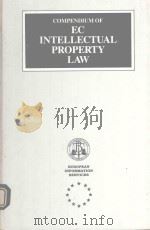
- COMPENDIUM OF EC INTELLECTUAL PROPERTY LAW
- 1990 BUTTERWORTHS
-

- THE EEC AND INTELLECTUAL PROPERTY
- 1981 OCEANA PUBLICATIONS
-

- CASES AND MATERIALS ON INTELLECTUAL PROPERTY
- 1996 SWEET AND MAXWELL
-

- International Intellectual Property Law
- 1997 Kluwer Law International
-

- INTELLECTUAL PROPERTY LAW IN AUSTRALIA COPYRIGHT
- 1977 BUTTERWORTHS
-

- Intellectual Property Law in Greece
- 1999 Springer
-

- LAW OF INTELLECTUAL AND INDUSTRIAL PROPERTY IN HONG KONG
- 1984 BUTTERWORTHS
-
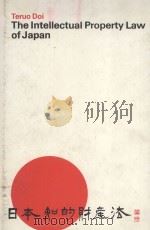
- The intellectual property law of Japan
- 1980 Sijthoff & Noordhoff
-
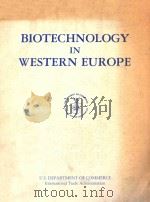
- Biotechnology in Western Europe
- 1987 International Trade Administration
-

- INTERNATIONAL INTELLECTUAL PROPERTY ANTHOLOGY
- 1996 ANDERSON PUBLISHING CO.
提示:百度云已更名为百度网盘(百度盘),天翼云盘、微盘下载地址……暂未提供。➥ PDF文字可复制化或转WORD

